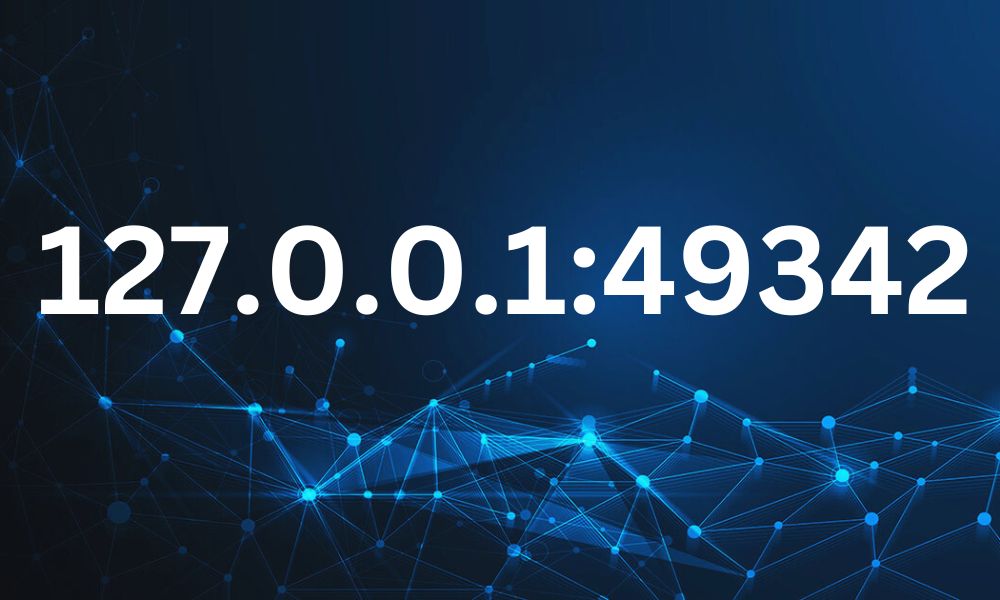
When it comes to computer networking, understanding IP addresses and their associated ports is crucial. Among the various IP addresses, 127.0.0.1 holds a special significance, often referred to as the localhost or loopback address. In this article, we will explore what 127.0.0.1:49342 signifies, its applications, features, specifications, and how it plays a vital role in network communications, especially for developers and IT professionals.
What is 127.0.0.1?
The Loopback Address
The IP address 127.0.0.1 is part of the IPv4 address space, specifically reserved for loopback purposes. This means that any data sent to this address is rerouted back to the same device, allowing for internal communication without leaving the device. This is essential for testing and development because it provides a way for applications to communicate with one another without needing a physical network connection.
How Does Loopback Work?
When a packet is sent to 127.0.0.1, the operating system recognizes this as a signal to redirect the packet back to itself. This internal routing ensures that the packet does not leave the computer, making it an efficient way to perform tests and access services running locally.
Common Uses of 127.0.0.1
- Testing Web Applications: Developers often use the loopback address to test web applications hosted on their machines without exposing them to the external network.
- Database Connections: Many applications connect to database servers on the same machine using the loopback address, ensuring fast communication.
- Network Configuration: Understanding localhost is fundamental when configuring network settings for various applications.
Understanding the Port Number: 49342
In networking, an IP address alone is not enough to identify a specific service or application running on a device. This is where port numbers come into play. Each service on a machine listens to a specific port.
What is Port 49342?
Port 49342 is a dynamic or private port. The dynamic range for ports is between 49152 and 65535. This means that the port is not assigned to a specific service by the Internet Assigned Numbers Authority (IANA) and can be used by applications dynamically for client-server communication.
Common Uses of Dynamic Ports
- Temporary Connections: Dynamic ports are often assigned for temporary connections, where the port is used for a short period before being released.
- Development and Testing: Developers may use dynamic ports when they need to run multiple instances of an application or service on the same machine without conflicts.
Table of Specifications and Features
| Feature | Description |
|---|---|
| IP Address | 127.0.0.1 |
| Port Number | 49342 |
| Type | Loopback Address |
| Protocol | TCP/UDP |
| Default Status | Available for dynamic allocation |
| Common Use Cases | – Web development – Database management – Local testing |
| Network Traffic | Internal communication only |
| Security | Secure by default, as it does not expose services to external networks |
| Operating Systems | Supported by all major operating systems (Windows, Linux, macOS) |
| Response Time | Immediate, as it does not traverse any network hardware |
| Configuration | Usually configured automatically by the operating system |
| Testing Tools | Can be used with tools like Postman, cURL, and various IDEs for local testing |
| DNS Resolution | Maps to localhost; can be resolved by hostname |
How to Use 127.0.0.1:49342
Accessing Services
To access services running on 127.0.0.1:49342, you typically use a web browser or a specific application designed to communicate over a network. Here are a few common methods:
- Web Browsers: You can type
http://127.0.0.1:49342into your web browser’s address bar to connect to a web application running on that port. - Command-Line Tools: Tools like
curlorwgetcan also be used to access services. For example: - Postman: This tool allows developers to make API requests to localhost addresses easily.
Configuring Applications
To set up applications to communicate through 127.0.0.1:49342, you often need to specify the IP address and port number in the application settings or configuration files. Here’s a basic example for a web server configuration (e.g., in a Node.js application):
Benefits of Using 127.0.0.1:49342
Enhanced Security
Using the loopback address adds a layer of security since any services exposed on this address are not reachable from external networks. This is particularly useful for testing applications in a controlled environment.
Quick Testing and Development
For developers, being able to quickly test changes without worrying about network configurations or external factors streamlines the development process. It allows for rapid iteration and debugging.
Resource Management
Using dynamic ports like 49342 allows multiple applications to run simultaneously on the same machine without port conflicts, as the operating system manages port allocation automatically.
Potential Issues and Troubleshooting
Common Problems
- Service Not Running: If you cannot connect to 127.0.0.1:49342, ensure that the service you are trying to reach is running. Check your application logs for any error messages.
- Firewall Settings: Sometimes, firewall settings can block connections to localhost. Make sure that your firewall allows traffic on the specified port.
- Port Conflicts: If another application is already using port 49342, you will need to either stop that application or configure your application to use a different port.
Troubleshooting Steps
- Check Application Logs: Look for error messages that may indicate issues starting the server or binding to the port.
- Use
netstat: This command can help identify which ports are in use. On Windows, use:On Linux or macOS, use:
- Restart Services: Sometimes, simply restarting the application or the computer can resolve connectivity issues.
Conclusion
Understanding 127.0.0.1:49342 is vital for anyone working in software development, networking, or IT. It provides a safe and efficient means to test and debug applications locally. By leveraging the localhost for internal communications, developers can focus on creating robust applications without the need for external resources.
In this article, we have explored the significance of the loopback address, the role of port numbers, and how to effectively utilize this knowledge in your development environment. By following best practices and being aware of potential issues, you can enhance your productivity and ensure your applications run smoothly.
Whether you are a seasoned developer or just starting, mastering the concepts surrounding 127.0.0.1:49342 will serve you well in your journey through the world of networking and application development.
FAQ
What is localhost?
Localhost refers to the local computer that you are using. The IP address 127.0.0.1 is a standard way to refer to this address in network communications.
Can I access a web application on 127.0.0.1 from another device?
No, the loopback address is only accessible from the local machine. If you want to access a service from another device, you need to use the actual IP address of your machine on the network.
What is the difference between TCP and UDP?
TCP (Transmission Control Protocol) is connection-oriented, ensuring that data packets are delivered reliably. UDP (User Datagram Protocol) is connectionless and does not guarantee delivery, making it faster but less reliable.
How do I change the port number for my application?
Changing the port number typically involves modifying the configuration settings within the application. Look for options related to network settings or binding configurations.
Is it safe to run services on localhost?
Yes, running services on localhost is generally safe as they are not exposed to external networks. However, you should always consider security practices when developing applications, even for local environments.



